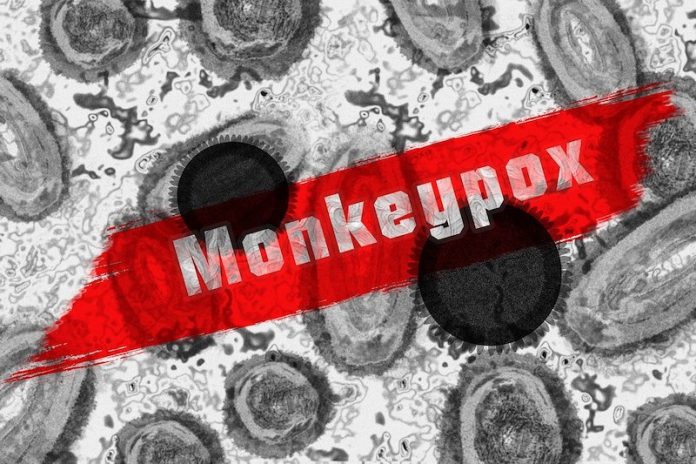
The current outbreak of monkeypox in several countries across the globe continues to grow, and while experts agree that overall risk to the general population remains low and the outbreak is containable, the surge has raised questions about how the virus is transmitted and who might be at risk.
Sagan Friant, assistant professor of anthropology and principal investigator of the RISK lab at Penn State, studies the anthropology of human health risks, including the currently unknown origins of recent monkeypox outbreaks in Nigeria since 2017.
Friant recently answered some questions about the outbreaks, including how monkeypox is transmitted, how it’s different from COVID-19, and whether it could become endemic outside of Africa.
How is monkeypox transmitted, and how does it differ from COVID-19?
Friant: Monkeypox is a virus first discovered in 1958 that circulates in animals in certain parts of Africa, and outbreaks are predominantly caused by human-wildlife interactions.
However, human-to-human transmission is also possible if someone has an active, symptomatic infection and comes in close contact with another person.
Symptoms usually include fever and body aches before the onset of a rash and the characteristic pustules. And it’s really that close contact with those pustules that allow transmission.
So while SARS-CoV-2 is highly transmissible via tiny aerosols in the air, monkeypox requires a much closer contact to spread.
Additionally, another one of the differences between monkeypox and SARS-CoV-2, is that SARS-CoV-2 is an RNA virus and monkeypox is a DNA virus.
Because there’s more corrective mechanisms in place for DNA than RNA, and it’s less likely to mutate.
This suggests that the problem we’ve had with SARS-CoV-2 mutating might not be as big of a problem with monkeypox.
It’s still a virus, it can still evolve, but possibly not as quickly. Typically, when we think of these pandemic-causing pathogens, it’s RNA viruses.
Is a new strain responsible for the new outbreaks?
Friant: We’re currently aware of two different strains of the virus that exist in Africa: one that originated in West Africa and is less transmissible with a mortality rate of around 1 in 100, and one that originally infected people in the Congo Basin and is associated with higher transmissibility and a mortality rate of up to one in 10.
Researchers are already working to sequence cases in the current outbreak, and have shown that the West African strain is the one circulating. So, the one that is less transmissible and virulent.
However, what is surprising about the outbreak so far is the amount of human-to-human transmission that we are seeing, which is unexpected and part of the reason scientists are on high alert.
Could the virus end up staying in the US or in Europe, becoming endemic?
Friant: One of the things about monkeypox is we don’t know the reservoir hosts, or the animal population that it typically circulates in on a regular basis.
There’s a suite of small-mammal rodent reservoirs that are hypothesized to be able to transmit the virus, which shows that it can infect a wide range of hosts.
Additionally, there was an outbreak in the U.S. in 2003 that happened after African rodents came into the country and transmitted monkeypox to prairie dogs that were sold as pets and then transmitted the virus to humans.
So theoretically, if monkeypox spilled back from humans to animals here in the U.S. or somewhere else, it could then begin to circulate and would be much harder to eradicate. It’s something scientists will be looking for.
What is your upcoming research hoping to find?
Friant: There was a monkeypox outbreak in Nigeria in 2017 that was the largest outbreak we had seen at the time, with cases popping up in both rural and urban areas in different parts of the country at the same time.
Prior to that, there had been 40 years with no cases of monkeypox in Nigeria. So the question is where did it come from?
Previous studies have surveyed people to ask them if they had touched an animal or ate bushmeat prior to becoming infected, but the range of ways people interact with animals are so much wider.
Now, we want to go in and follow up on new cases with questions that are much more in-depth so we can gather better data on how people interact with potential monkeypox reservoirs.
This could help us eventually design more effective studies to find out what the animal reservoirs are and to also better understand factors that put people at higher risk for contracting monkeypox.
If you care about monkeypox, please read studies about whether monkeypox is the next COVID-19 and the secret behind a monkey’s poker face.
For more information about COVID, please see recent studies that COVID-19 infection can cause pain reliever, and this depression drug may help prevent severe COVID-19.



